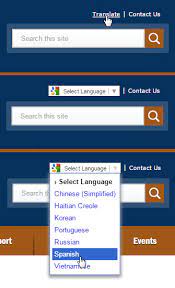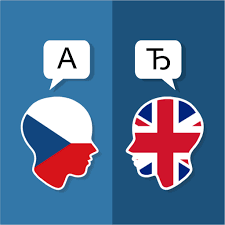Google Translate and the Power of Creole Translation
Language is a beautiful tool that allows us to connect, communicate, and understand each other. However, language barriers can often hinder effective communication, making it difficult for people from different linguistic backgrounds to interact seamlessly. This is where translation technology comes in, and one language that has greatly benefited from such advancements is Creole.
Creole languages are unique and fascinating forms of communication that have evolved over time through the mixing of different languages. They are typically spoken by communities with diverse cultural backgrounds, such as those found in parts of the Caribbean and Africa. One such example is Haitian Creole, which emerged as a blend of French, African languages, and various other influences.
In the past, translating Creole texts or conversations posed significant challenges due to the lack of comprehensive translation resources. However, with the advent of Google Translate, this has changed dramatically. Google Translate has revolutionized the way we bridge language gaps by providing an accessible and user-friendly platform for translating text and speech.
Google Translate’s support for Creole languages has been a game-changer for individuals and businesses alike. It allows users to translate text from English or other major languages into Haitian Creole or other Creole variants with just a few clicks. This feature empowers individuals to communicate effectively across linguistic boundaries without needing an extensive knowledge of multiple languages.
The accuracy and quality of Google Translate’s Creole translations have significantly improved over time thanks to advancements in machine learning and artificial intelligence technologies. As more people utilize the platform and provide feedback on translations, Google’s algorithms continuously learn from these interactions, leading to more refined results.
While Google Translate provides an invaluable resource for basic translations in Creole languages, it’s important to note that it may not capture all nuances or cultural references accurately. Language is deeply intertwined with culture and context, so relying solely on automated translation tools may not be sufficient for complex documents or sensitive conversations. In such cases, it is advisable to seek the assistance of professional human translators who possess a deep understanding of Creole languages and their cultural implications.
Google Translate’s impact on Creole translation extends beyond individuals seeking quick translations. It has also opened up opportunities for businesses to reach wider audiences by localizing their content into Creole languages. This localization process ensures that marketing materials, websites, and other communication channels resonate with the target audience, leading to increased engagement and customer satisfaction.
In conclusion, Google Translate has revolutionized the way we bridge language barriers and has played a significant role in enhancing communication involving Creole languages. While it may not be a substitute for human translation in all cases, it serves as a powerful tool that enables individuals and businesses to connect with Creole-speaking communities around the world. As technology continues to advance, we can expect further improvements in Creole translation accuracy and accessibility, fostering greater understanding and inclusivity across linguistic boundaries.
Frequently Asked Questions about Google Translate and Creole
- Does Google Translate have Creole?
- What happened Google Translate?
- What is Giro in English?
- How do you say Gallo in English?
- What is the most accurate Google Translate?
- What is the meaning of Pico in Spanish?
- What is your name in Korean Google?
- Is Google Translate accurate for Creole?
Does Google Translate have Creole?
Yes, Google Translate does have support for Creole languages, including Haitian Creole. You can use Google Translate to translate text from English or other major languages into Creole and vice versa. The accuracy and quality of the translations have improved over time, thanks to advancements in machine learning and artificial intelligence technologies. However, it’s important to note that while Google Translate is a valuable resource for basic translations, it may not capture all nuances or cultural references accurately. For more complex documents or sensitive conversations, it is advisable to seek the assistance of professional human translators who have a deep understanding of Creole languages and their cultural implications.
What happened Google Translate?
Google Translate is a widely used online translation service developed by Google. It uses machine learning and artificial intelligence technologies to provide translations between different languages. Over the years, Google Translate has seen significant advancements and improvements in its accuracy, speed, and language coverage.
One of the key developments in Google Translate was the introduction of neural machine translation (NMT) in 2016. NMT greatly improved the quality of translations by considering entire sentences or phrases as a whole, resulting in more natural and contextually accurate translations.
Another notable update was the expansion of language support. Google Translate initially supported a limited number of languages but gradually expanded to cover over 100 languages and dialects, including both widely spoken languages and lesser-known ones.
In addition to text translation, Google Translate also introduced features like speech-to-text translation, allowing users to speak into their devices and have their words translated in real-time. This feature has been particularly useful for travelers or individuals communicating with others who speak different languages.
Furthermore, Google Translate has made efforts to improve its accessibility by launching mobile apps for iOS and Android devices. These apps allow users to access translation services on-the-go, making it convenient for users to communicate effectively even when they are offline or have limited internet connectivity.
While Google Translate has undoubtedly made significant strides in improving translation capabilities, it’s important to note that automated translation tools still have limitations. Translating complex or nuanced texts accurately can be challenging for machine-based systems due to variations in language usage, cultural references, idiomatic expressions, and context-specific meanings.
Google acknowledges these limitations and encourages users to provide feedback on translations through their “Improve this translation” feature. This feedback helps Google’s algorithms learn from user input and continuously refine their translations over time.
In summary, Google Translate has evolved into a powerful tool that enables quick and accessible translations between numerous languages. While it may not be perfect for every situation, it continues to improve through advancements in technology and user feedback, making it an invaluable resource for individuals and businesses seeking multilingual communication.
What is Giro in English?
In English, the word “giro” can have multiple meanings depending on the context. Here are a few common translations:
- Giro (noun): In financial terms, a giro refers to a system of transferring money electronically from one bank account to another. It is similar to a direct deposit or bank transfer.
- Giro (noun): In cycling, a giro (or Giro d’Italia) is an annual multiple-stage bicycle race held in Italy. It is one of the three prestigious Grand Tours along with the Tour de France and Vuelta a España.
- Giro (noun): In Italian, “giro” simply means “tour” or “turn.” It can be used in various contexts such as taking a tour around a city or going for a walk.
Please note that these translations may not cover all possible meanings of the word “giro,” as it can have different interpretations based on specific regional or cultural contexts.
How do you say Gallo in English?
The word “Gallo” in English translates to “Rooster.”
What is the most accurate Google Translate?
Google Translate is continuously improving its accuracy across multiple languages. However, it’s important to note that the accuracy of translations can vary depending on factors such as language pair, complexity of the text, and context. Generally, Google Translate performs well with widely spoken languages like English, Spanish, French, German, and Chinese.
In recent years, Google has made significant advancements in machine learning and neural network models, which have greatly enhanced translation quality. These improvements have led to more accurate translations that capture nuances and produce more natural-sounding results.
That being said, it’s crucial to remember that Google Translate is an automated tool and may not always provide perfect translations. It is particularly challenging for languages with complex grammar structures or idiomatic expressions. Therefore, for important or sensitive documents where precision is crucial, it’s advisable to consult professional human translators who possess expertise in both the source and target languages.
Google Translate should be seen as a helpful tool for getting the gist of a text or for basic communication needs. Its accuracy continues to improve over time as more data is fed into its algorithms and user feedback is incorporated into its training processes.
To summarize, while Google Translate has made significant strides in accuracy and usability across many languages, it is always recommended to use it alongside human expertise when precise translations are required.
What is the meaning of Pico in Spanish?
In Spanish, the word “pico” has multiple meanings depending on the context. Here are a few common translations:
Beak: “Pico” can refer to the beak of a bird or the snout of certain animals.
Example: “El pájaro tiene un pico largo y afilado” (The bird has a long and sharp beak).
Peak/Summit: “Pico” can also refer to the peak or summit of a mountain or hill.
Example: “Llegamos al pico más alto de la montaña” (We reached the highest peak of the mountain).
Bit/Small Amount: In some contexts, “pico” can mean a small amount or bit of something.
Example: “Solo necesito un pico de azúcar para endulzar el café” (I just need a bit of sugar to sweeten my coffee).
Pickaxe/Pick: Another meaning of “pico” is pickaxe, which is a tool used for breaking up hard surfaces like rocks or soil.
Example: “Usé un pico para cavar en el jardín” (I used a pickaxe to dig in the garden).
These are just a few examples, and there may be other meanings for “pico” depending on specific contexts and regional variations in Spanish.
What is your name in Korean Google?
In Korean, the term “Google” is written as “구글” (pronounced “Goo-geul”).
Is Google Translate accurate for Creole?
Google Translate has made significant strides in improving the accuracy of Creole translations over the years. However, it is important to note that machine translation, including Google Translate, may still have limitations when it comes to capturing the nuances and intricacies of Creole languages.
Creole languages often have unique grammar structures, vocabulary, and cultural references that can be challenging for automated translation systems to fully comprehend. As a result, there may be instances where Google Translate provides a general understanding of the text but fails to capture the precise meaning or context accurately.
While Google Translate’s algorithms continuously learn from user interactions and feedback, it is always advisable to approach automated translations with caution, especially for complex documents or sensitive conversations. It is recommended to consult professional human translators who have expertise in Creole languages for critical or specialized translation needs.
That being said, Google Translate can still be a valuable resource for basic translations and getting the gist of a text in Creole languages. It can help bridge communication gaps and provide a starting point for further understanding. Users should keep in mind its limitations and use it as a tool alongside other language resources when striving for accurate and nuanced translations.



